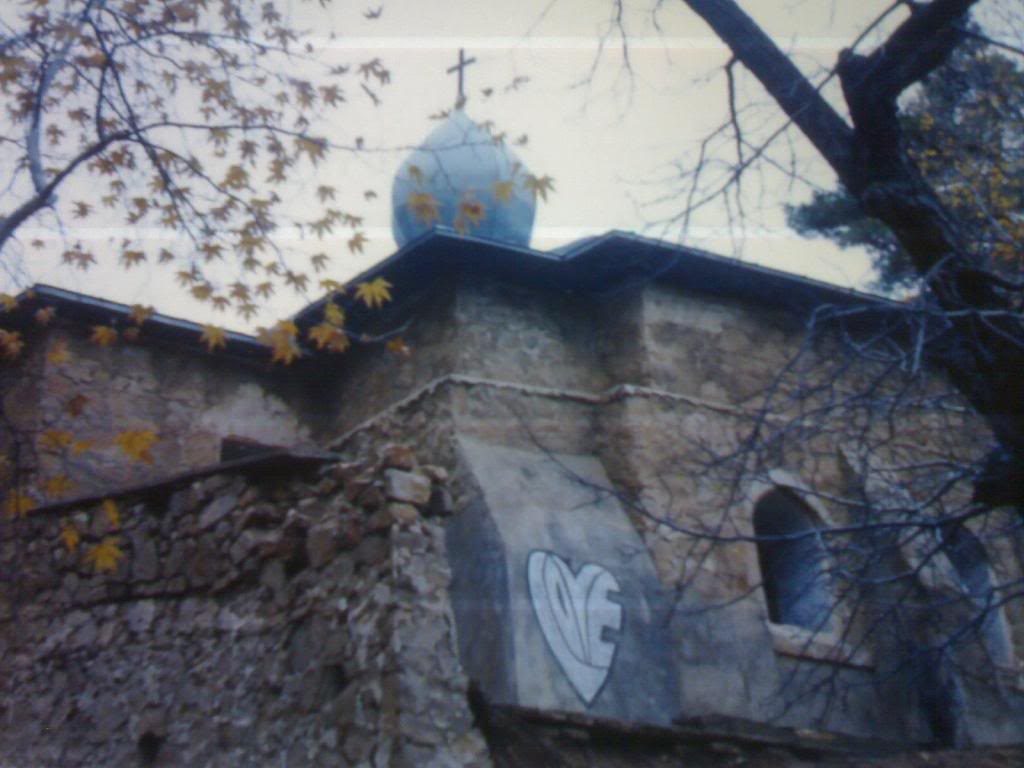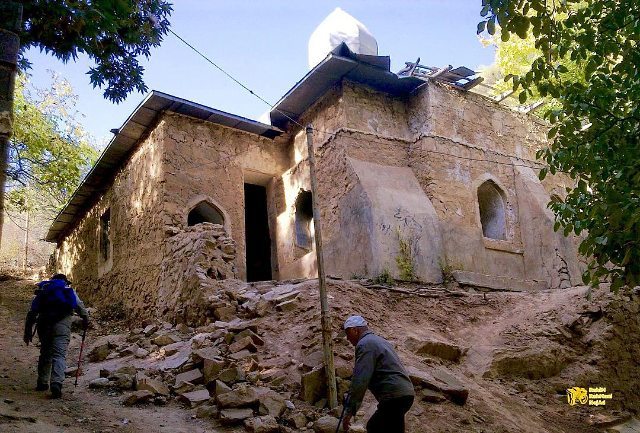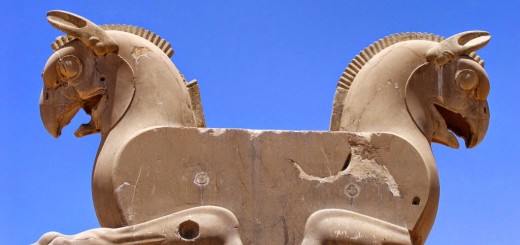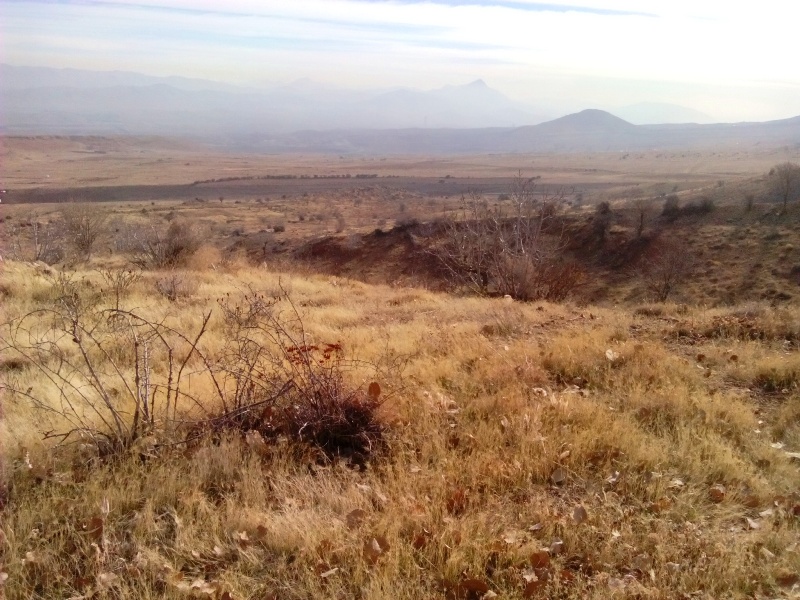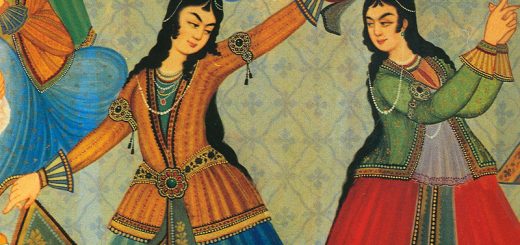THE VILLAGE CHURCH OF QALAT
History of the Qalat church
We were traveling along a dry and dusty road on a hot August day, leaving a large cloud of sand in our wake. There was little to be seen except the arid, barren mountains in the south, brown and parched and with no sign of vegetation or life. As we scanned these dry rocks there
appeared suddenly a small patch of green nestled in a hollow, like a man’s hand, and it spoke of an abundance of rain. That little oasis on the side of the mountain was the village of Qalat, near Shiraz, where the first village church for the use of converts from Islam was consecrated in September,
1936, by Bishop Thompson.
The building of that church is a romance of persecution and perseverance. The first step was taken in 1929 when a Bible Society colporteur, who had visited the village, reported that two men were interested in the Gospel. The seed sown was not left unwatered, and the Rev. J. R. Richards and Mansur Sang, a Christian dervish, proceeded to pay regular visits from the C.M.S. station at Shiraz. As soon, however, as it became known that some of the villagers were interested in Christianity trouble started, and the mullah stirred the villagers into active opposition Those who were interested were ostracized.
They were refused entry to the public baths, on the ground that they were religiously unclean. They were despised by their friends and relatives. From time to time they were openly attacked, and it became difficult for them to earn a living.
On one occasion when Mansur Sang visited the village the mullah gathered the people together, surrounded the Christian visitor and threatened to kill him. Mansur Sang was in no way daunted. "Carry on," he cried, "I came here to be killed." They soon realized that nothing could daunt him, and although they beat him and turned him out, he returned again and the Christian witness continued.
At that time the inquirers met in a small room in the house of one of their number; this came to be called the "upper room." Here, after a rather stormy open-air meeting in March 1930, the first baptismal service was held. The opposition has now been overcome, but only by persistent courage and after much suffering.
The authorities at Shiraz eventually interposed to forbid the opposition, which was never official, for there is no
official religious liberty in Iran. There were disadvantages of meeting in a room in the house of one of the members. It gave that member a place of authority and power to which he might not be spiritually entitled, and the other members, willy-nilly, were under an obligation to him.
Again, there was no Christian rich enough to possess a room really suitable for meetings. It was therefore decided to build a church as early as possible, and a wonderful site was secured just above the village.
The favorite walk for those seeking rest and peace is above the village to the waterfalls; on the way they must pass the church, and the building stands as a permanent witness to the preaching of the gospel of peace. It is truly founded upon a rock, for the material foundation is the rock of the mountain, and the living
foundation is Jesus Christ. On the day of consecration a great crowd came out from Shiraz, and even the head men of Qalat, who had been hostile in
the past, appeared and acted as voluntary policemen to keep the crowd quiet during the service. The little church is admittedly small, it is only a little cloud like a man's hand; but it brings the promise of an abundance of rain (i Kings xviii. 14). It
speaks of advance and new life in two important respects. First of all, it is a witness to the new religious freedom which Christians have in Iran.
Twenty years ago such a step would have been impossible. The older church buildings in Isfahan and Kerman are in the center of the C.M.S.
hospital compounds. This has many disadvantages, and newcomers are not slow to criticize the site; but it was inevitable. In the early days of the
Mission it was not officially recognized that a Moslem could change his religion, and converts had to worship under the protective shade of the
institutional buildings for which foreigners had a concession. In Yezd, for example, the church had to be content for many years with the use of a
vacant ward in the hospital adapted for this purpose. Those days have now passed and there is complete [40/41] liberty of worship. A man, even if
his names be Mohammad Ali, those of the greatest prophets of the Shi'a Moslem religion, may register himself as a Christian.The church of Qalat also speaks of advance in another and more important direction. This church building is the first that has been built in a place
where there is no missionary institutional work. It is, therefore, entirely Iranian, and is a witness to the growth of the Church in Iran towards
independence and responsibility. It was inevitable in the early days of Christian witness that the chief emphasis should be upon the medical and
educational work, for these were the only ways a Christian could get real contact with the people and disarm suspicion. It is not that missionary
work would have been impossible without these, but that it would not have been effective, and the Church owes much to the medical and
educational work. The institutions always suffered because their work was branded as foreign, and the Church was likewise looked upon as a
foreign Church. The common title in the towns was and often is, the English Church. No such objection can be raised against the little church
which has been built in Qalat. The village Christians there possess neither foreign missionary nor institution and, although the church has
developed through constant care and supervision from Shiraz it is over thirty miles away and lives a separate life.
The church when it was intact
And nowadays….
Source: Something New in Iran, by J. N. Hoare (1937)




